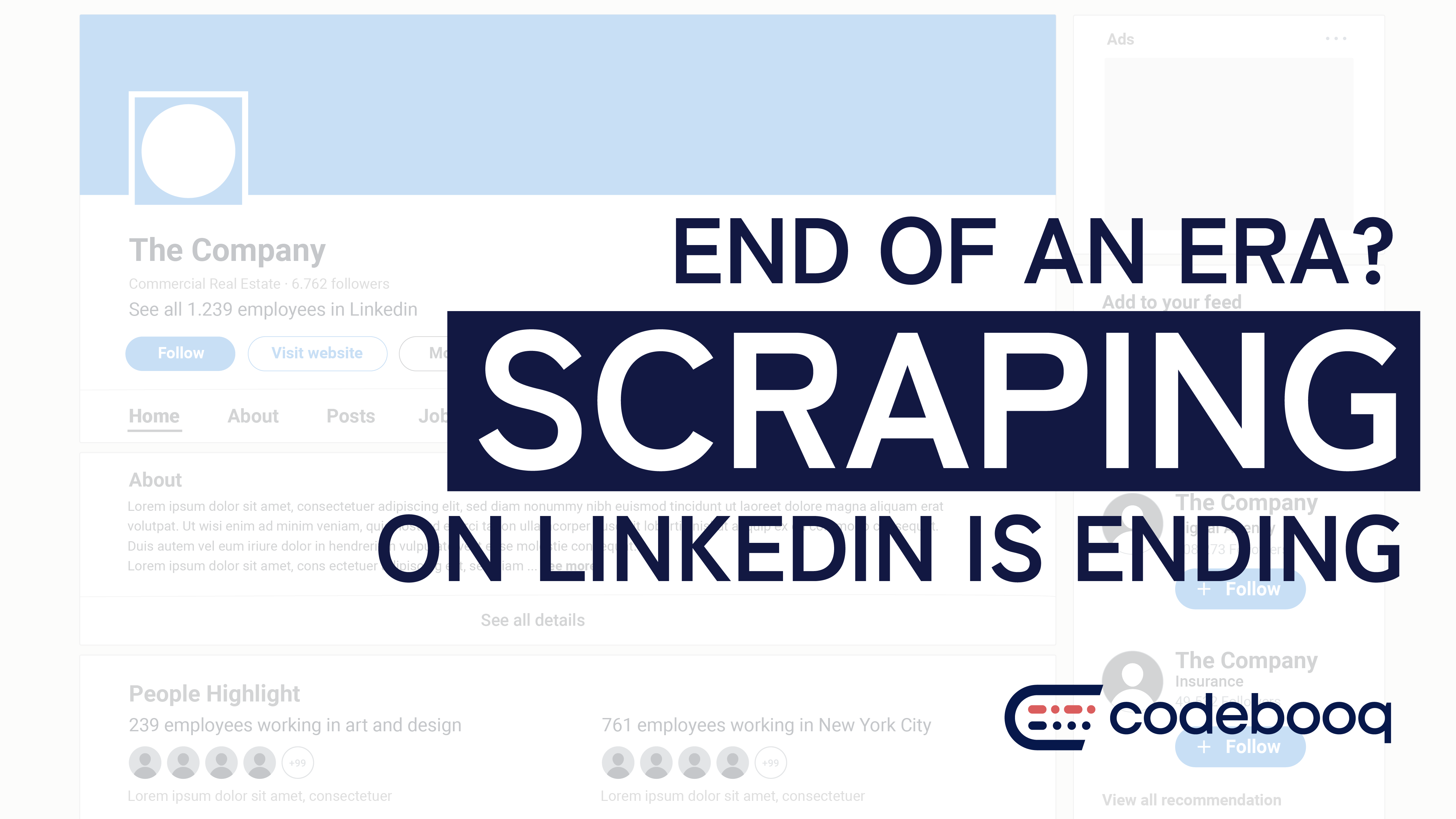
IT B2B sales professionals are always looking for new ways to connect with potential clients and grow their networks. As a result, LinkedIn, the largest professional networking platform, has become an essential tool for sales teams to engage with decision-makers in their target industries. However, as the platform has grown, the practice of developing software solutions that allow sales teams to collect large amounts of data and execute campaigns faster has also increased. Thus, let’s focus on the data collection aspect.
What is LinkedIn Scraping?
Scraping involves the automated extraction of publicly available data from LinkedIn user profiles and company pages. This practice helps gather contact information, job titles, company details, and other useful insights for targeted outreach campaigns. The appeal of scraping lies in its ability to collect large amounts of relevant data instantly, saving countless hours of manual research and prospecting. With the rapid growth of AI, many service providers also implement automation for outreach and engagement. Consequently, this raises ethical questions and impacts trust within the professional community.
LinkedIn’s Evolving Approach to User Protection
LinkedIn constantly works to secure its users from unwanted behavior. Here’s a brief timeline of restrictions and measures introduced over the past decade:
- 2013: LinkedIn introduces its first API throttling measures to limit automated data collection.
- 2014: The platform updates its User Agreement to clearly prohibit the use of bots, scrapers, and other automated tools.
- 2016: LinkedIn implements stricter daily limits on connection requests to combat spam and unwanted outreach.
- 2018: The company introduces weekly InMail limits and improves algorithms to detect suspicious account activity.
- 2020: LinkedIn updates its Professional Community Policies, emphasizing real engagement and prohibiting fake accounts or misrepresentation.
- 2021: Monthly limits on connection requests are introduced, and detection systems for automated tools are refined.
- 2022: LinkedIn enhances account restriction policies, implementing temporary and permanent bans for users violating the User Agreement without prior notice.
- 2023: The company plans to use AI and machine learning to better detect scraping attempts and other prohibited activities.
These measures aim to keep LinkedIn a trustworthy and safe space. The latest User Agreement update clearly prohibits any use of automated tools or software to scrape data from the platform. Specific prohibitions include:
- “Develop, support or use software, devices, scripts, robots or any other means or processes (including crawlers, browser plugins, and add-ons or any other technology) to scrape the Services or otherwise copy profiles and other data from the Services” (LinkedIn User Agreement, Section 8.2).
- “Use bots or other automated methods to access the Services, add or download contacts, send or redirect messages” (LinkedIn User Agreement, Section 8.13).
Implications for the Sales Community
The ongoing battle against LinkedIn scraping has significant implications for sales professionals and SaaS companies providing sales tools based on LinkedIn data. Many popular sales tools rely on data collection from LinkedIn for lead generation, account-based marketing, competitive intelligence, and outreach automation.
As LinkedIn tightens its restrictions, sales teams may face several challenges:
- Reduced access to data: Stricter limits on connection requests and messaging can hinder the ability to build networks and engage with prospects at scale.
- Increased risk of account restrictions: Using scraping and automation tools or engaging in suspicious behavior can result in temporary or permanent account bans.
- Adaptation of sales strategies: Sales teams may need to pivot towards more personalized, high-touch approaches that prioritize quality over quantity.
- Re-evaluation of sales tech stack: Companies may need to reassess their use of sales tools that rely heavily on LinkedIn data, seeking alternatives that comply with the platform’s policies.
Despite these challenges, opportunities exist for sales professionals to stand out through genuine engagement and value-driven interactions. By focusing on building real relationships and providing useful insights, sales teams can still use LinkedIn for B2B sales success.
Future of IT B2B Sales on LinkedIn
The landscape of LinkedIn scraping and B2B sales is changing. Therefore, sales professionals and organizations must adapt their strategies to remain effective while respecting the platform’s rules and user privacy. The future of IT B2B sales on LinkedIn will likely involve balancing technology use with maintaining authentic human connections.
Sales teams that prioritize quality engagements, personalize their outreach, and use social selling practices can continue to thrive in an increasingly digital and privacy-conscious environment. The core principles of effective sales—building relationships, understanding customer needs, and delivering solutions—remain as important as ever. By embracing these basics and adapting to new realities, B2B sales professionals can succeed on LinkedIn.
Conclusion
Ultimately, the LinkedIn scraping dilemma reminds us of the importance of ethical practices in sales. As the digital landscape changes, so must salespeople’s approaches to professional networking and business development. They should always aim to build trust, respect privacy, and foster meaningful connections in the B2B space. Stay safe out there!